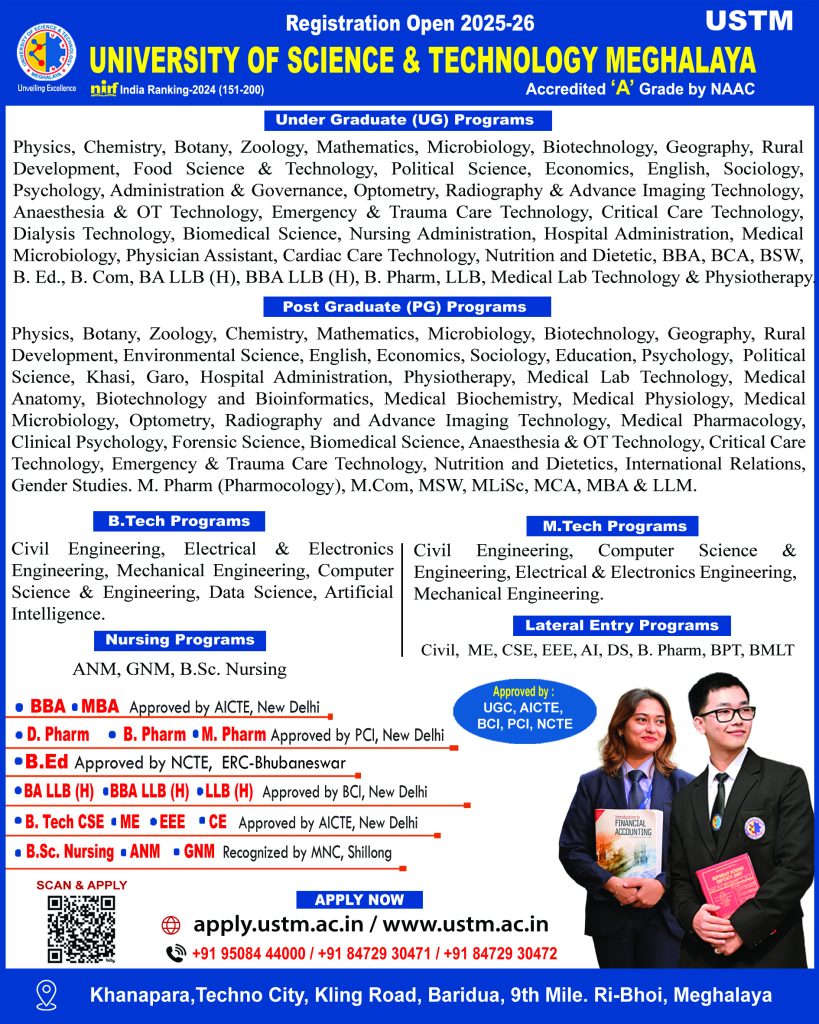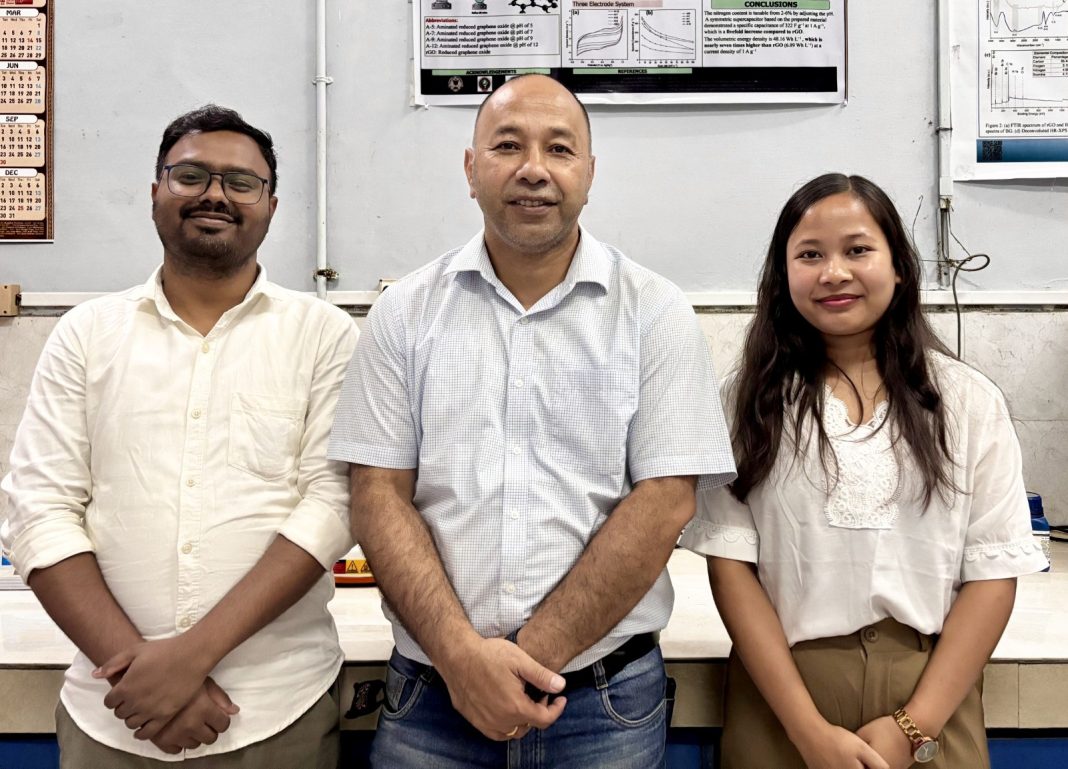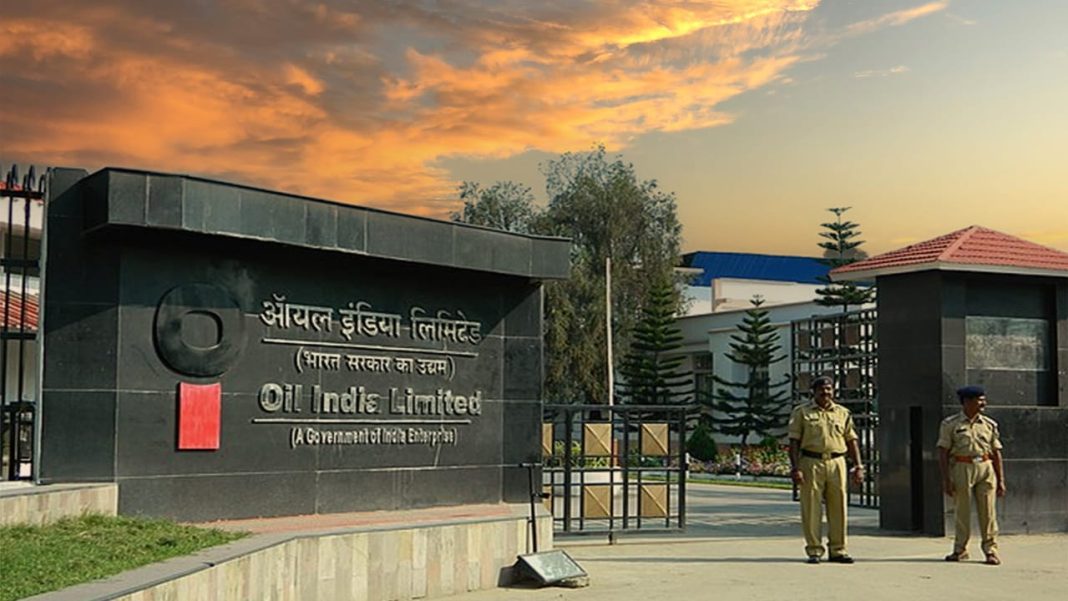
Guwahati, May 5: A multi-institute research team led by Nagaland University has developed a low-cost, energy-efficient method to create a high-performance material for next-generation energy storage devices known as supercapacitors.
Supercapacitors are drawing increasing interest because they can store large amounts of energy and recharge rapidly—key advantages over conventional batteries. However, the widespread use of supercapacitors has been limited by the high cost of electrode materials. The breakthrough from this team could change that.
The researchers have successfully developed a fast, one-pot process to synthesize aminated graphene—a functionalized derivative of reduced graphene oxide—from bulk graphite. This new method is cost-effective, significantly faster than traditional approaches, and operates under moderate temperature and pressure conditions. It also minimizes resource usage, making it suitable for large-scale and sustainable production.

Initial lab results are promising. The aminated graphene demonstrated excellent electrochemical properties, including a wide electrochemical window of 2.2 volts, energy density exceeding 50 Wh/kg, 98% energy retention after 10,000 cycles and a fivefold increase in gravimetric energy density compared to non-aminated variants.
This innovation holds commercial potential and aligns with India’s clean energy goals. The research has already been granted an Indian patent and published in iScience, an open-access journal from Cell Press (DOI: 10.1016/j.isci.2025.112271).
Suraj Kumar, a DST-INSPIRE Fellow at Nagaland University, carried out the work under the joint supervision of Prof. Dipak Sinha (Nagaland University) and Prof. Dinesh Rangappa (Visvesvaraya Technological University, Karnataka). Team members included Priyakshi Bora (Nagaland University), Kunal Roy (Visvesvaraya Technological University), and Dr. Navya Rani M. (Nagarjuna College of Engineering and Technology, Karnataka).
Prof. Sinha emphasized that this method makes graphene-based supercapacitor materials more viable for commercial energy storage systems: “It’s faster, cleaner, and delivers significantly enhanced performance.”
Suraj Kumar added, “By simplifying and accelerating the production process, we’ve taken a big step toward practical, scalable energy solutions.”





